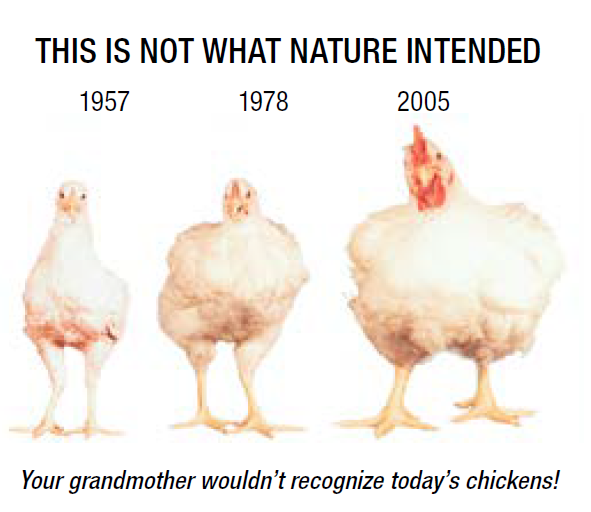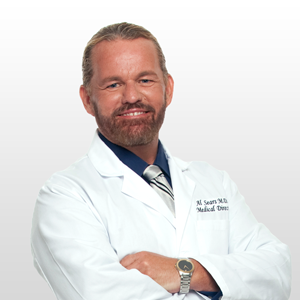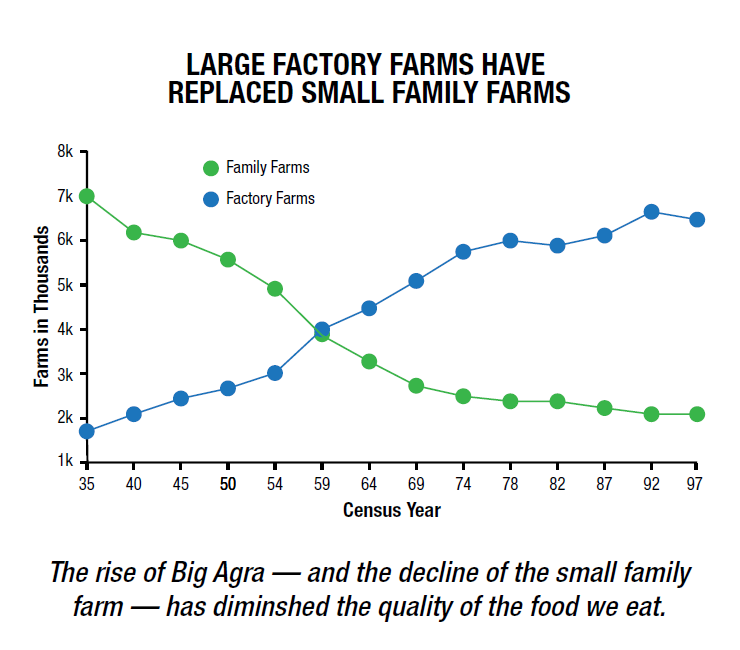SECRETS IN REGENERATIVE MEDICINE
THE MODERN EPIDEMIC OF BALLOONING BREASTS

LOW ESTROGEN ISN'T THE PROBLEM
Most doctors blame this modern problem on decreasing estrogen levels. In fact, they have three theories — or myths — about what’s causing what I call “ballooning breast syndrome” :
Each of these theories is easy to disprove. Let me take them one by one...
Myth #1:
With lower estrogen levels, women eat more and are less physically active. This causes them to gain weight.
The truth: It’s true that obesity continues to be a growing problem. But in the case of women with swollen breasts, only their cup sizes increased. Not their band — or back — size.
Myth #2:
Too little estrogen causes the body to use starches and blood sugar less effectively. This increases fat storage in the breasts.
The truth: Discounting the second theory is easy. Even women following a no-carbohydrate, Paleo diet have seen their breast swell.
Myth #3:
After menopause, lower estrogen levels cause the milk-producing mammary glands to return to their non-lactating state. These milk ducts and the entire glandular structure eventually revert to fat.
The truth: Women have always stopped producing milk as they got older. It’s a normal part of the life cycle. And for generations, these women’s breasts shrank, not swelled.
In fact, every theory that blames large, painful breasts on decreasing estrogen levels is wrong.
Oversized breasts aren’t caused by too little estrogen.
The problem is TOO MUCH... resulting in what’s known as estrogen dominance.
At this stage in a woman’s life, estrogen and fat work hand in hand. Estrogen settles into fatty areas like the breasts and stomach. The fat cells in these areas then expand and produce estrogen of their own.
The problem is fake estrogens are everywhere. We’re surrounded by them. And a major player in the estrogen dominance game is our food supply.
MODERN FOOD SUPPLY
FEEDS ESTROGEN DOMINANCE
Our world has changed dramatically in the last hundred years.
We’ve taken food production away from the family and given it to faceless corporations. Now we have a booming food industry.
Their agenda is to sell food with the highest profit margin. And that means using tons of estrogen-mimicking chemicals in your food. When these chemicals get into your bloodstream, they attach to your estrogen receptors. They act like estrogen. But there’s a difference...
These chemical hormones are MUCH stronger than the estrogens your body produces naturally.
They give your cells a strange new set of instructions. In response to these new messages, your body’s estrogen levels shoot through the roof. Estrogen starts to take over your entire hormonal system. Progesterone, testosterone and other hormones can’t keep up.
STEER CLEAR OF FARM-FACTORY ANIMALS

BUY ORGANIC WHEN IT COUNTS
Commercial fruits and vegetables are grown using chemical pesticides and fertilizers. These chemicals act like very strong estrogen in your body.
When possible, choose organic produce. They don’t use pesticides or chemical fertilizers. In the produce aisle, check the Price Look-Up (PLU) stickers on all your fruits and vegetables. Conventional produce has a 4-digit code. Organic produce has a 5-digit code starting with the number 9.

AVOID PROCESSED, PACKAGED FOODS
5 FOODS THAT HELP BALANCE HORMONES

Al Sears, MD.
Also In This Issue:
References:
Jul;120(1):13-26.
2 Den Tonkelaar I, Peeters PH, van Noord. PA . Increase in breast size after menopause: prevalence and determinants. Maturitas. 2004 May 28;48(1):51-7.
3 2015 Cosmetic Surgery National Data Bank Statistics. American Society for Aesthetic Plastic Surgery Acc. Jan. 17, 2017
4 Breast Reduction Surgery Has Higher Complication Rate in Older Women. American Society of Plastic Surgery Accessed Jan. 19, 2017
5 Steroid Hormone Implants Used for Growth in Food-Producing Animals. www.fda.gov/AnimalVeterinary/SafetyHealth/ProductSafetyInformation. Accessed January 13, 2017.
6 Renehan AG, Zwahlen M, Minder C, O’Dwyer ST, Shalet SM, Egger M. Insulin-like growth factor (IGF)-I, IGF binding protein-3, and cancer risk: systematic review and meta-regression analysis. Lancet. 2004;363(9418):1346–1353.
7 Epstein S. Hormones in U.S. Beef Linked to Increased Cancer Risk. Cancer Prevention Coalition. October 21, 2009.
8 Fitzpatrick, Michael, MD, as quoted in Lawrence, Felicity, “Should we worry about soya in our food?, The Guardian, July 25, 2006
9 May N. Poultry Science Association. 2007. Newly proposed mechanism for
the action of antimicrobial growth promoters (AGPs) may open the door to the development of new non-antibiotic alternatives to AGPs. March 26, 2007.
10 Environmental Working Group. Dirty Dozen Guide to Food Additives. http://www. ewg.org. Accessed January 17, 2017.
11 Vandenberg L et al. The male mammary gland: a target for the xenoestrogen bisphenol A. Reprod Toxicol. 2013 Jun; 37: 15–23.
12 Hartle J, et al. The consumption of canned food and beverages and urinary Bisphenol A concentrations in NHANES 2003–2008. Environmental Research. Volume 150, October 2016, Pages 375–382.
13 Darbre PD, et al. Concentrations of parabens in human breast tumours. J Appl Toxicol. 2004 Jan-Feb;24(1):5-13.
14 Atrazine Continues to Contaminate Surface Water and Drinking Water in the United States. www.nrdc.org. Accessed January 15, 2017.
15 Heftmann, E., Ko, S., Bennet, R.D., “Identification of estrone in pomegranate seeds.” Phytochemistry 1966;5,1337-1339.

AL SEARS, MD

Enter your email below to discover how the cancer industry scammed this celebrity!
As an added bonus, you will also receive a FREE subscription to Ageless Beauty Secrets
Copyright © Al Sears MD 2018 · All Rights Reserved
Dr. Sears’ Center for Health and Wellness
11905 Southern Blvd., Royal Palm Beach, FL 33411
Phone: 1.866.792.1035 | About Dr. Sears | Privacy Policy

